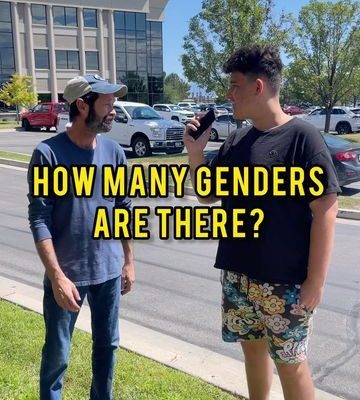how many genders are there
How Many Genders Are There? A Deep Dive into Gender Identity
The concept of gender has evolved significantly over time. While traditional perspectives often categorize gender as strictly male or female, contemporary understandings recognize a more complex spectrum. But how many genders are there? This question has sparked debates across cultures, scientific disciplines, and social movements. By exploring historical perspectives, cultural variations, and modern interpretations, we can gain a clearer understanding of gender as a fluid and dynamic construct. Therefore, it is important to explore the nuances of this discussion thoroughly.
Understanding Gender: A Historical Perspective
Historically, gender was viewed as a binary classification, rooted in biological sex. However, ancient civilizations recognized gender diversity long before modern discussions. For instance:
- Hijras in South Asia: A recognized third gender in India, Pakistan, and Bangladesh.
- Two-Spirit People: Indigenous North American societies acknowledged individuals embodying both masculine and feminine traits.
- Fa’afafine in Samoa: A gender identity distinct from male and female, widely accepted in Samoan culture.
Because these historical examples illustrate that gender diversity is not a new phenomenon but has existed for centuries, it is essential to continue exploring gender identity through a modern lens.
Biological Sex vs. Gender Identity
It is crucial to differentiate between biological sex and gender identity. While biological sex is determined by chromosomes and physical attributes, gender identity refers to an individual’s personal sense of their gender. The key distinctions include:
- Male and Female (Biological Sex): Assigned at birth based on physical traits.
- Gender Identity: How individuals perceive themselves, which may or may not align with their biological sex.
- Non-Binary Identities: Those who do not exclusively identify as male or female.
Thus, understanding the distinction between these concepts allows for a more inclusive perspective on gender.
The Expanding Gender Spectrum
Modern discussions on gender recognize a broad spectrum beyond the binary system. Some of the widely acknowledged gender identities include:
1. Cisgender
Because cisgender individuals identify with the gender they were assigned at birth, they typically do not experience gender dysphoria.
2. Transgender
Since transgender people identify with a gender different from their assigned sex at birth, they may pursue gender-affirming medical or social transitions.
3. Non-Binary
Given that non-binary individuals do not exclusively identify as male or female, they may experience gender as a fluid, shifting, or in-between state.
4. Genderfluid
As genderfluid people experience shifts in their gender identity over time, their gender expressions can change frequently.
5. Agender
Because agender individuals do not identify with any gender, they may reject gender classifications entirely.
6. Bigender
Since bigender individuals identify with two genders, they may feel both masculine and feminine simultaneously or alternately.
7. Demiboy and Demigirl
As demiboy individuals identify partially with being male, they may also have aspects of other gender identities. Similarly, demigirl individuals partially identify as female but do not fully align with the binary classification.
8. Two-Spirit
Because this identity is specific to Indigenous North American cultures, it embodies both masculine and feminine qualities unique to their traditions.
9. Neutrois
Since neutrois individuals prefer a neutral or null-gender identity, they typically reject traditional gender roles and expectations.
10. Xenogender
As xenogender people relate their gender identity to concepts beyond human experiences, they may define their gender based on nature or abstract ideas.
Cultural Perspectives on Gender (how many genders are there)
Since different cultures have varied approaches to gender, it is essential to recognize that some societies strictly enforce binary gender roles, while others embrace gender diversity:
- Western Societies: Traditionally rigid but increasingly accepting of gender diversity.
- South Asia: Recognizes Hijras as a legally recognized third gender.
- Indigenous Cultures: Many have long acknowledged gender identities beyond male and female.
- Scandinavian Countries: Progressive policies recognizing non-binary identities in legal documents.
Thus, acknowledging cultural perspectives enhances our understanding of gender beyond a Western framework.

The Science Behind Gender Identity
Research in psychology and neuroscience suggests that gender identity is shaped by multiple factors, including genetics, hormonal influences, and social conditioning. Because of this, key findings include:
- Brain Structure Differences: Studies indicate variations in brain regions related to gender identity.
- Hormonal Influences: Prenatal hormone exposure can affect gender identity development.
- Socialization: Cultural and environmental factors also play a role.
Legal Recognition of Gender Identities
Since many countries have begun legally recognizing non-binary and third-gender identities, advancements include:
- United States: Some states allow non-binary gender markers on official documents.
- Canada: Recognizes gender ‘X’ on passports.
- Germany: Legalized a third gender option for intersex individuals.
- India: Grants legal rights to the Hijra community.
Challenges Faced by Gender-Diverse Individuals
Despite progress, gender-diverse individuals continue to face challenges, including:
- Discrimination: Workplace bias, healthcare disparities, and social exclusion.
- Legal Barriers: Lack of legal recognition in many countries.
- Mental Health Struggles: Higher rates of anxiety, depression, and gender dysphoria.
Since these challenges persist, increased awareness and policy changes are necessary.
The Future of Gender Understanding
As discussions on gender continue to evolve, future trends may include:
- Greater Legal Recognition: More countries adopting non-binary legal status.
- Inclusive Language: Greater awareness of gender-neutral pronouns.
- Educational Initiatives: School curricula incorporating gender studies.
Thus, as society progresses, gender inclusivity will likely expand even further.
Conclusion
Because the question of how many genders exist does not have a simple answer, it is essential to recognize that gender is shaped by biology, culture, and personal identity. While some view gender as binary, others acknowledge a broad spectrum. With growing awareness and acceptance, the understanding of gender will continue to evolve, fostering inclusivity and respect for all identities.





